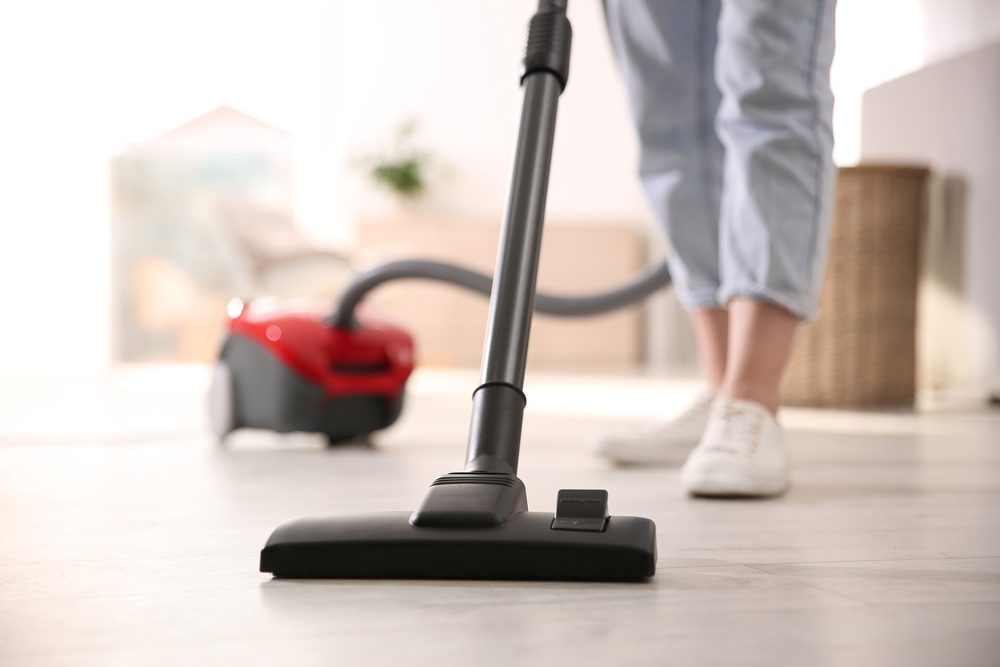Air pollution is a serious health threat, but not everyone has the necessary funds to invest in an air purifier. However, thankfully, there are so many natural hacks you can use to help clean and refresh your indoor air as well.
In this post, we’ll take a look at seven of the most effective natural ways to keep air quality high in your home. From plants and essential oils to activated charcoal and more, these tips will help you make sure the air your family breathes is as healthy and fresh as possible!

1. Vacuum and dust on a daily basis
If you have asthma or allergies, cleaning your home regularly is definitely a must. Even if you don’t have either of those conditions, though, it’s still important to keep your living space clean for the sake of your health.
A lot of people think that they need an air purifier in order to achieve this, but we all know how expensive air purifiers can be! If you can’t afford to purchase one or don’t want to spend your money on one, there are some natural hacks that work just as well.
One of the best ways to clean your indoor air is to vacuum and dust on a daily basis. This will help to remove any allergens or other particles that might be floating around in the air. Believe it or not, but one single carpet can collect a lot of allergens and dust! In addition to regular vacuuming, it is a good idea to mop your floors once a week.
2. Open your windows
If you want to enjoy fresh air without spending a fortune on an air purifier, open your windows! Yes, with the risk of sounding funny, this simple hack will allow you to enjoy the outdoors without worrying about unhealthy air particles.
Just be sure to keep an eye on the pollen count during spring if you suffer from allergies.
3. Make air purifier indoor plants a top priority
You don’t need us to tell you that all plants are nature’s air purifiers. Because they take in carbon dioxide and release oxygen, they can easily help you improve indoor air quality. Not to mention, they add a touch of life and color to any room
! If you’re looking to improve your home’s air quality on a budget, start by adding some plants. Just in case you’re not sure what to get, here are some of our suggestions: Aloe Vera, Money Plant, Gerbera Daisy, and Chrysanthemum.
4. Essential Oils
Bacteria, viruses, fungi, and mold can be killed by using essential oils, including those from rosemary, cinnamon, oregano, thyme, grapefruit, lemon, clove, and lemon. In fact, a lot of recent studies have shown that Thieves oil, which is a strong antiseptic combination of pure essential oils, including pine needle, has a 90% kill rate against airborne bacteria. Wow, that’s quite a lot!
This mixture can do wonders for your home, and besides purifying the air, it can also leave the room free of bacteria. Don’t worry about the costs because most essential oils are pretty affordable compared to an air purifier! Amazon has a huge variety, but this is our best recommendation.

5. Avoid scented candles, switch to beeswax ones
The first step to improving the air quality in your home is to avoid burning scented candles. While candles have a soothing vibe and can make your home smell nice, they can also release harmful chemicals into the air that can seriously alter your health.
If you adore scented candles and yet want to include them in your overall home décor, it is advisable to stay away from paraffin candles, which are made of petroleum and release airborne toxins like benzene, toluene, and soot. As an alternative to this, you might choose to burn a few beeswax candles each day because they are great for purifying the air.
Even if these hand-crafted candles are pricier than regular scented candles, they burn slower, so it won’t be necessary to replace them that often.
6. Maintain the air conditioning filters as clean as possible!
If you have central air conditioning, chances are you have an air filter that helps clean the air before it enters your home. These filters can become clogged with dust and dirt over time, which can reduce their efficiency. That’s why it’s important to check and clean your air conditioning filters regularly to ensure they are working properly.
There are a few different ways you can clean your air conditioning filters: the first option is to vacuum them with a brush attachment, and the other one is to wash them with soap and water. If they are especially dirty, you may need to use a mild detergent. Once they are clean, be sure to rinse them thoroughly and allow them to dry completely before putting them back in place.
Believe it or not, these air filters can damage the air that circulates in your house pretty badly if they aren’t cleaned properly, so if you don’t know how to do this on your own, you can ask for professional help.
This can be done twice a year, depending on how often you use the appliance.
7. Proper ventilation
Installing trickling vents to freshen up and recycle the indoor air is preferable if you live in a city with high levels of air pollution as opposed to opening windows and allowing the pollution to enter your home. Exhaust fans are an excellent substitute that aid in moving pollutants outside.
For example, bathrooms are an active source of bacteria because a lot of houses don’t have a window here. That’s why it’s very important to remove all the steam from your shower before leaving the bathroom. Install a fan that can help circulate the air and prevent the growth of mold and mildew.
Furthermore, since they are a significant source of indoor air pollution, especially if you use a gas stove, kitchens also need to be adequately vented.
8. Avoid mold and mycotoxins
We just mentioned how important it is to get rid of mold and mildew from your moisture spaces in your house because, in most cases, a lot of apartments are built without a bathroom window, which is a mistake, but if this is your case as well, you have to deal with the situation as best as possible.
Mycotoxins, which mold creates, can lead to a variety of health issues, including fatigue, immune system suppression, and more. Eliminate all sources of moisture and swiftly fix leaks for healthier indoor air.
Any porous, moldy, or musty materials should be eradicated from an indoor environment (like drywall, wood, or paper). Metal, glass, and various plastics are examples of non-porous materials that may be fully cleaned and dried after being exposed to mold.
In order to keep mold and other bacteria at bay, you should maintain the humidity level in your house between 40 and 50%.
Eventually invest in an air purifier
We know that most air purifiers can be pretty expensive, but later on, after you take all the above measures, you can also invest in a real air purifier. Because we won’t live in a super-clean environment anytime soon, you must consider investing in things that help us maintain a healthy life. And if our home fails to be safe, then where is the safest space to live in?
We hope you enjoyed these air-purifying tips and you will return for more amazing ones in the future! Maybe you’d like THIS one as well.















